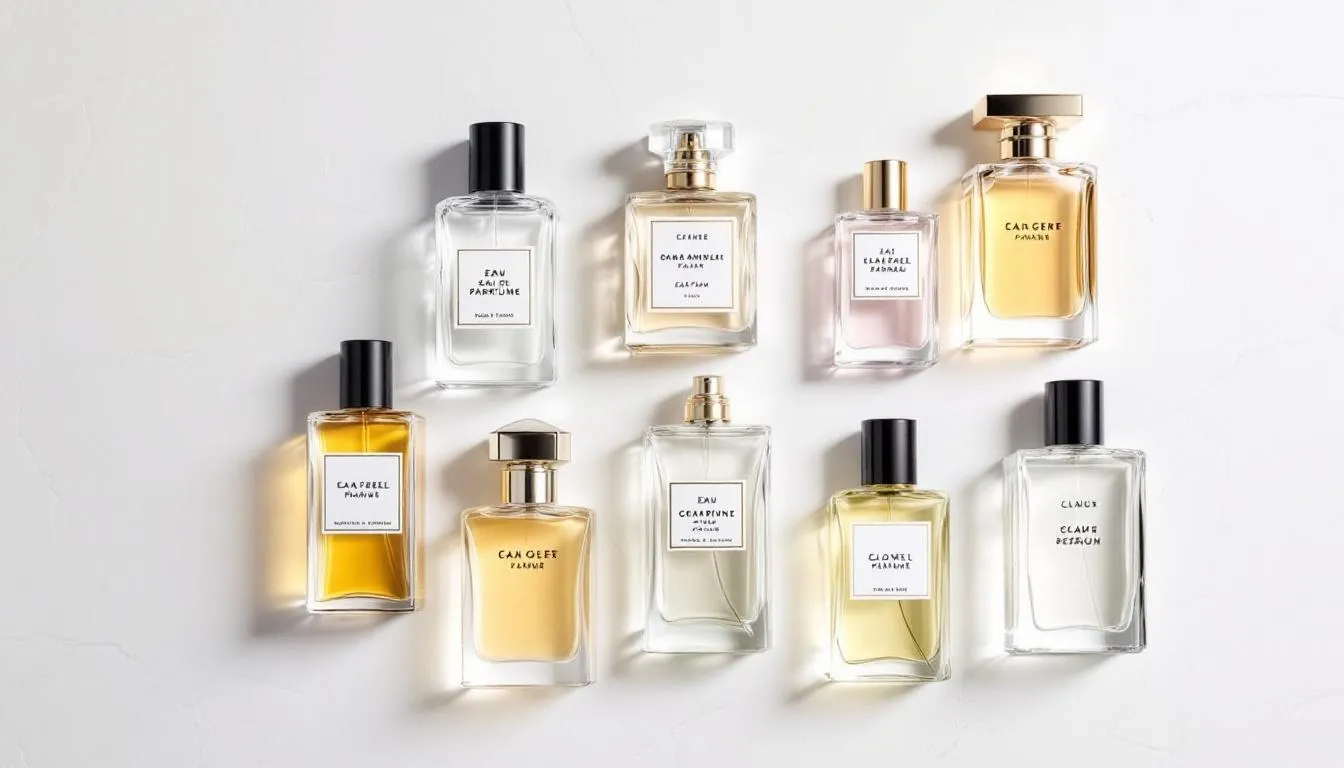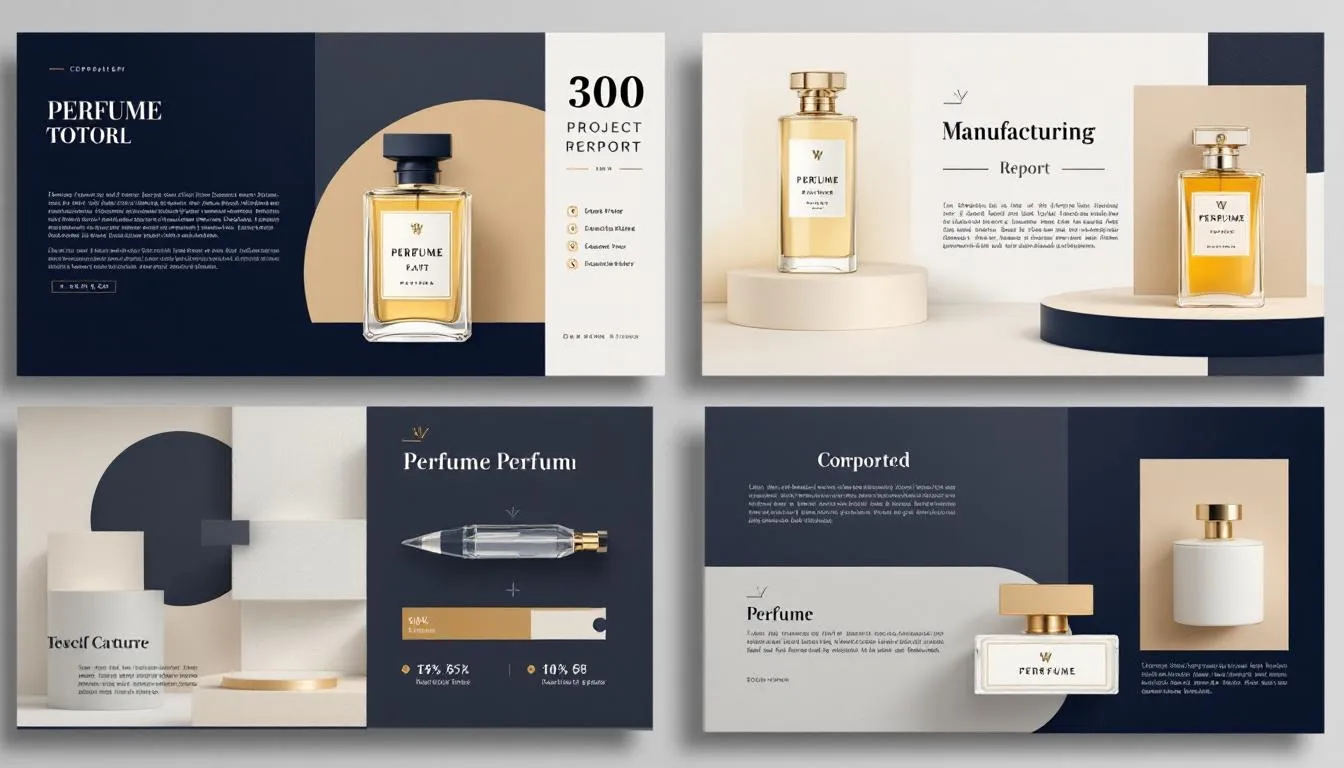Are you planning to start a perfume manufacturing business and need a detailed project report? This article covers everything you need to know—from initial setup costs and machinery requirements to market analysis and financial projections. A well-crafted perfume project report is essential for securing financing and navigating the industry’s complexities. Read on to get a comprehensive overview of what it takes to succeed in this thriving market.
The perfume industry in India has seen significant growth over the past few years. With an increasing demand for both attars and synthetic perfumes, the market has expanded rapidly. This growth is fueled by a rise in consumer spending on personal care products and the influence of global perfume brands entering the Indian market.
A detailed project report is crucial for anyone entering the perfume business. It helps in securing financing, planning the setup, and navigating industry complexities. Whether applying for a bank loan or attracting investors, a well-crafted report will guide you to success.
Our project work aims to provide you with an executive summary of the key factors involved in setting up a perfume manufacturing plant. From market analysis to financial projections, we will cover all the critical elements to ensure your business plan is comprehensive and effective. The company aims to address these factors thoroughly.

Perfume is an artful blend designed to give a pleasing fragrance. It is composed of a mix of natural and synthetic odorous materials, including essential oils and aroma chemicals. These materials are carefully selected and combined to create a unique scent profile.
The structure of a perfume consists of:
Perfumes can evoke powerful emotions and memories, often tailored to reflect individual styles and preferences.

Vast Domestic and Export Opportunities: The market potential for perfumes in India is vast, with significant opportunities for both domestic sales and exports.
Growing Demand for Natural Fragrances: Increasing preference for organic and sustainable products is a key factor driving the expansion of natural fragrance demand.
Rise of eCommerce Platforms: The growth of eCommerce platforms has made it easier for consumers to access a wide variety of perfumes, boosting sales significantly.
Niche and Private Label Opportunities: Niche perfumes and private label segments cater to consumers seeking unique and personalized fragrance experiences.
Trend Towards Customization and Exclusivity: The industry is moving towards customization and exclusivity, creating promising growth opportunities for innovative perfume brands.
Understanding industry trends and conducting a thorough market analysis and economic analysis is key to establishing a successful perfume manufacturing facility. Analyzing market dynamics, operational costs, growth drivers, and performing a SWOT analysis helps develop a robust business model for long-term profitability analysis and sustainability.
Several factors are driving growth in the perfume market. Increased consumer spending on luxury and personal care products, advancements in fragrance composition, and expanding retail networks are significant contributors. Millennials, in particular, are increasing their wallet share towards luxury products, adding a substantial boost to the market.
Consumer preferences are shifting towards unique and personalized fragrances, with a growing emphasis on sustainable sourcing and environmentally friendly practices. This trend is influencing perfume brands to adopt more eco-conscious approaches, appealing to a broader audience.
The market size is projected to grow at an annual rate of 7.5%, indicating rising demand and promising potential for new entrants in the market share.
The perfume industry is highly competitive, with major players dominating the market, including Dior, Chanel, Gucci, and Hugo Boss. Other significant competitors include Estee Lauder, L’Oreal, Coty, and Avon. Understanding the competitive landscape is crucial for maintaining a competitive edge and differentiating your brand.
Creative packaging and effective use of social media are key strategies employed by many perfume brands to stand out in the crowded market. Focusing on target market needs, high-quality fragrances, and affordable price helps carve out a niche for your brand and attract a loyal customer base.
The primary target demographic for the perfume business is women aged 18 to 45, characterized by young professionals and university students with higher disposable incomes. The secondary target market includes men of the same age group, sharing similar characteristics. Understanding these demographics is crucial for tailoring your marketing strategies and product offerings.
Thorough market research helps understand consumer preferences before launching your product. This research identifies the scents and packaging that resonate with your target audience, ensuring a successful launch and sustained market presence.
Comprehensive Business Plan: The primary objective of the project report is to serve as a detailed business plan suitable for various applications, including bank loan applications, investor presentations, and government subsidy proposals.
Financial Projections: It includes detailed financial projections that outline expected revenues, expenses, profit margins, and overall financial viability.
Marketing Plan: The report incorporates a strategic marketing plan that highlights approaches to reach the target market, increase sales, and build brand awareness.
Research Methodology: It outlines the research methodology used to gather market data, analyze trends, and understand consumer preferences.
Operational Plans: The project report details operational plans, including production processes, resource requirements, and management strategies.
Market Analysis: It provides an in-depth market analysis covering industry trends, competitive landscape, and growth opportunities.
Business Model Overview: The report presents a clear overview of the perfume business model, explaining how the business intends to create value and generate profits.
Funding Support: A well-prepared project report helps secure funding and support by demonstrating the business’s potential and readiness to investors and financial institutions.
Clear and Concise Overview: It offers a succinct summary of the perfume business, making it easier for stakeholders to understand the venture’s scope and objectives.
Choose high-quality fragrance oils and alcohol essential for the perfume formulation.
Combine fragrance oils and alcohol in precise proportions to create the base mixture.
Allow the mixture to age for a specific period, enabling the scents to blend and mature for the desired fragrance profile.
Filter the aged mixture to remove impurities and ensure clarity and quality.
Fill the filtered perfume into bottles using accurate filling machines.
Package and label the bottled perfume with appropriate materials, ensuring brand identity and product safety.
Conduct rigorous testing throughout the process to maintain consistency in scent and longevity for each batch.
The raw materials required for perfume manufacturing include essential oils such as lavender, jasmine, and sandalwood. These oils form the base of the fragrance and are carefully selected for their quality and scent profiles. Solvents like ethanol and DPG are used to dissolve the oils and create the final mixture.
Other essential raw materials include fixatives, which help stabilize the fragrance, and packaging materials such as bottles, spray pumps, caps, labels, and packaging boxes. Ensuring the quality of these raw materials is critical for producing high-quality perfumes that meet consumer expectations.
Setting up a perfume manufacturing facility requires specific machinery requirements and equipment, similar to what you would find in a perfume factory. Key items include:
The cost of setting up a perfume manufacturing plant can vary widely based on the production scale and the level of automation. A semi-automatic setup can cost between ₹5 lakh and ₹25 lakh, depending on the machinery and equipment required. Additional costs include raw materials, packaging, utilities, and licensing fees.
It’s essential to factor in ongoing operational expenses and plan for these operating costs in your financial projections. Carefully budgeting for both initial and ongoing expenses ensures the long-term viability of your total cost of the perfume manufacturing business.
A sample financial projection for a perfume manufacturing project typically includes:
The financial projections should include:
These elements provide a comprehensive overview of the project’s financial viability and help in securing funding from banks and investors.
Starting a perfume manufacturing business requires several licenses and approvals, including:
Additionally, securing a trademark for your brand is essential for protecting your intellectual property and establishing a strong market presence.
There are various funding and subsidy options available for perfume businesses. These include Mudra Loans under CGTMSE, the PMEGP Scheme, and state MSME incentives such as capital and interest subsidies.
Additionally, registering under Startup India can provide access to various benefits and support mechanisms for new entrepreneurs.
Effective marketing and distribution strategies are crucial for the success of your perfume business. Selling via eCommerce platforms like Amazon, Flipkart, and Nykaa can significantly increase your reach and sales. Additionally, partnering with distributors and retailers can help you penetrate the offline market.
White-label and bulk orders for other brands offer another revenue stream, while Instagram and influencer marketing can create buzz and attract a loyal customer base. Leveraging digital marketing and influencer partnerships enhances brand visibility and can increase sales growth.
Key strategies include:
We invite you to download a ready-made perfume project report that includes sections like product selection, competitive analysis, and branding strategies. This sample report adheres to educational guidelines and is suitable for use in academic settings.
It also includes detailed financial projections, CMA data, and a loan proposal format to help you secure funding and support for your perfume business.

The significance of having a dedicated perfume manufacturing plant cannot be overstated. Quality control is crucial in the perfume manufacturing process, involving rigorous testing to ensure that each batch meets established standards for scent and longevity. This ensures that the final product is consistent and high-quality, which is essential for building a reputable brand.
A dedicated manufacturing facility also enhances efficiency and scale, allowing for better management of production processes and cost control. By having a well-crafted business plan and effective marketing strategies, business planning can help you establish a strong customer base and navigate the competitive landscape successfully.
Setting up a perfume manufacturing plant involves several critical steps:
These steps are essential for a smooth setup.
Challenges such as securing raw material supply, managing high capital requirements, and operational risks must be addressed carefully. The typical timeline for setting up a perfume manufacturing plant is around 12 to 18 months, during which initial cost considerations and operational expenses should be meticulously planned.
Choosing the right location for your perfume manufacturing plant is critical to its success. Factors such as proximity to raw material suppliers, transportation infrastructure, and availability of skilled labor should be carefully evaluated. A strategically located plant can significantly reduce logistics costs and improve operational efficiency.
Investment in advanced infrastructure enhances efficiency, ensures quality control and quality assurance, and regulatory compliance with industry standards. The manufacturing facility should have sufficient space for production, storage areas, and safety measures to support a seamless production process, incorporating technological advancements and quality control equipment.
The perfume business is an excellent opportunity for first-time entrepreneurs, women entrepreneurs under special Mudra schemes, and existing cosmetic traders looking to expand their product offerings. With the right business plan and support, anyone with a passion for fragrances can successfully venture into this industry.
In conclusion, the perfume manufacturing business presents a significant opportunity for growth and success. With thorough project planning and an understanding of market dynamics, you can establish a profitable venture.
We encourage you to download our detailed project report to guide you through each step of setting up your perfume manufacturing plant.

Comprehensive Financial Projections: Our report provides detailed financial projections including DSCR analysis, ROI, and BEP to help you understand the profitability and financial feasibility of your perfume business.
Customizable CMA Data: The report includes CMA data in editable formats, allowing you to tailor the information to suit your specific business needs and customized solutions.
Expertly Prepared: Created by professional Chartered Accountants and industry consultants, ensuring accuracy and relevance in all aspects of the perfume manufacturing business.
Complete Business Coverage: From raw material sourcing to legal formalities and marketing strategies, the report covers every critical element required to start and run a successful perfume business.
Guidance on Government Schemes: It provides valuable information on Startup India registration and how to claim subsidies, helping you leverage government support for your venture.
Bank-Ready Format: Designed to meet the requirements of Mudra, CGTMSE, and MSME loan applications, making it easier to secure funding from financial institutions.
To sum up, starting a perfume manufacturing business involves careful planning, market research, and strategic execution. By understanding the market potential, industry trends, and financial aspects, you can create a successful and sustainable business. We hope this guide has provided valuable insights and encourages you to take the next step in your entrepreneurial journey.
To start a perfume manufacturing business, begin by conducting a market feasibility study and securing the necessary licenses. Following that, arrange funding, select a suitable location, procure equipment, and establish a reliable supply chain.
The essential raw materials for perfume manufacturing are fragrance oils, solvents like ethanol, fixatives, and packaging materials including bottles and spray pumps. Ensuring the right combination of these elements is crucial for creating high-quality perfumes.
Setting up a perfume manufacturing plant costs between ₹5 lakh and ₹25 lakh for a semi-automatic setup, excluding raw materials, packaging, utilities, and licensing. Proper budgeting for these additional expenses is essential for a successful launch.
Perfume businesses can explore various funding options such as Mudra Loans under CGTMSE, the PMEGP Scheme, state MSME incentives, and advantages from Startup India registration. These resources can provide essential financial support for growth and development.
A project report is essential for a perfume business as it not only secures financing but also offers a comprehensive plan that includes financial projections and market analysis. This detailed documentation ensures you can effectively navigate the complexities of the industry and position your business for success.